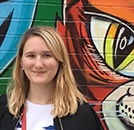Although The Shadow Museum is centrally located it is somewhat difficult to find as it is tucked within a gated courtyard (of which St. Petersburg has many). Once you find it, however, it is worth the searching as it offers a fun, interactive, and interpretive experience that tells a short history of St Petersburg through shadows.
The museum focuses on the creation of shadows constructed of often random-seeming everyday objects. Although this kind of museum is popular in North America and Japan, this particular museum was the first of its kind in Russia. The museum’s creator completed a Master’s Program in Management at St Petersburg State University. Whilst studying, she became interested in the creation of shadows as a form of art and when she found out there was no museum that focused on this artform in Russia she created it herself. She used her skills in management to fund the museum herself and now manages the museum. It opened in May of 2018 which coincided with the 315th anniversary of the founding of St Petersburg.
The museum promotes a creative and critical thinking. The goal of the museum is to show that creativity and art can come from anything, even mundane objects from everyday life.
Upon entry into the museum the visitor will be offered a tour in either Russian or English. The tour is required as there are no audio guides available and the interactive experience with the guide is part of the museum’s overall presentation. You may want to go with a friend as the tours need to consist of at least two people. As you walk through the museum the guide constantly challenges the viewer’s perception by asking if you can guess what the shadow will be based on the constructed object or if you can guess what objects make the shadow.
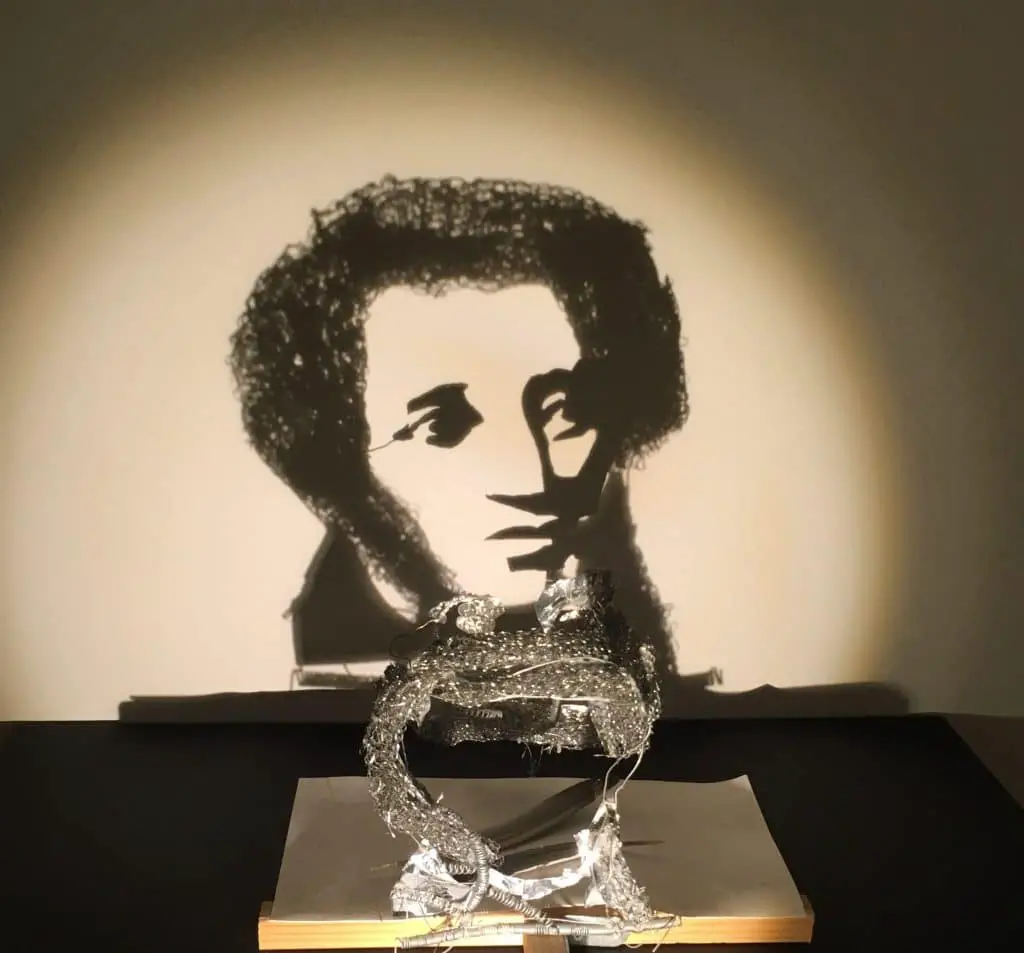
In the first room of the Shadow Museum, you are introduced to the cultural history of St Petersburg. In this completely dark room, the guide shines a light on a pile of steel wool, springs, and tin foil and asks the viewer questions about it. At first, the guide shines the light at a random angle, but as you discuss the art and the guide moves the light, a portrait of Alexander Pushkin, often called the “Father of Russian Literature,” comes into a focus. Pushkin is particularly important in St Petersburg’s cultural history as his literature first established the now-common trope of portraying Saint Petersburg as a wondrous city with a dark side.
The next two shadows are constructed purely of small impressionist wood sculptures. The first slightly resembles the head of the horse and once the light shines at the proper angle it shows a horse mid-trot. This once again ties back to St Petersburg’s history and is meant to remind the viewer of not only the statue of the Bronze Horseman but also Pushkin’s story by the same name. This story analyzes Peter the Great’s dual legacy in Russia as he is viewed as both a God-like figure for constructing a city from nothing and as an Anti-Christ who built a city in an area prone to the dangers of flooding. The next wooden construction appears as the shadow of an eagle and highlights Russia’s national symbol. Russia borrowed the eagle symbol from Constantinople and used a double-headed eagle as the country’s symbol because the bird looks both to the east and to the west.
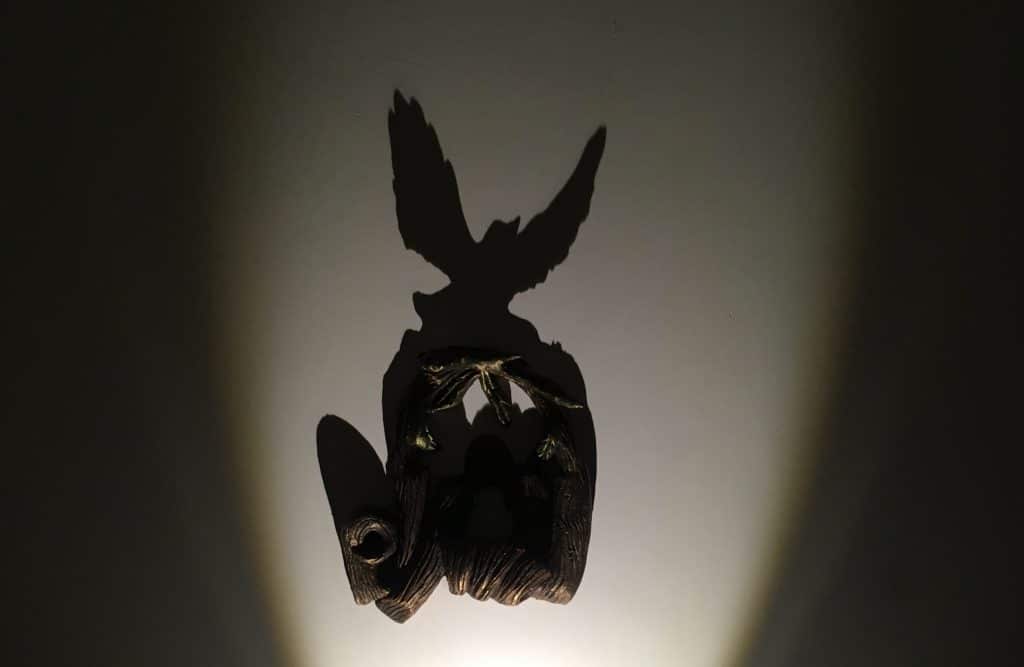
Across from Pushkin are two shadows constructed entirely of toothpicks. Once the light shines on them, they reveal two other important figures in St Petersburg’s history. The first is Peter the Great, the former Tsar of Russia whose desire to build a fleet and have a “window on the West” led him to found the city. The second is Nikolai Gogol, another famous author in the St Petersburg literary tradition. Similar to Pushkin, Gogol depicted St Petersburg as a city of magic with a dark underbelly. In his stories, St Petersburg becomes personified as a force in her own right that drives everyday characters to madness, leaving them unable to distinguish between reality and dream.
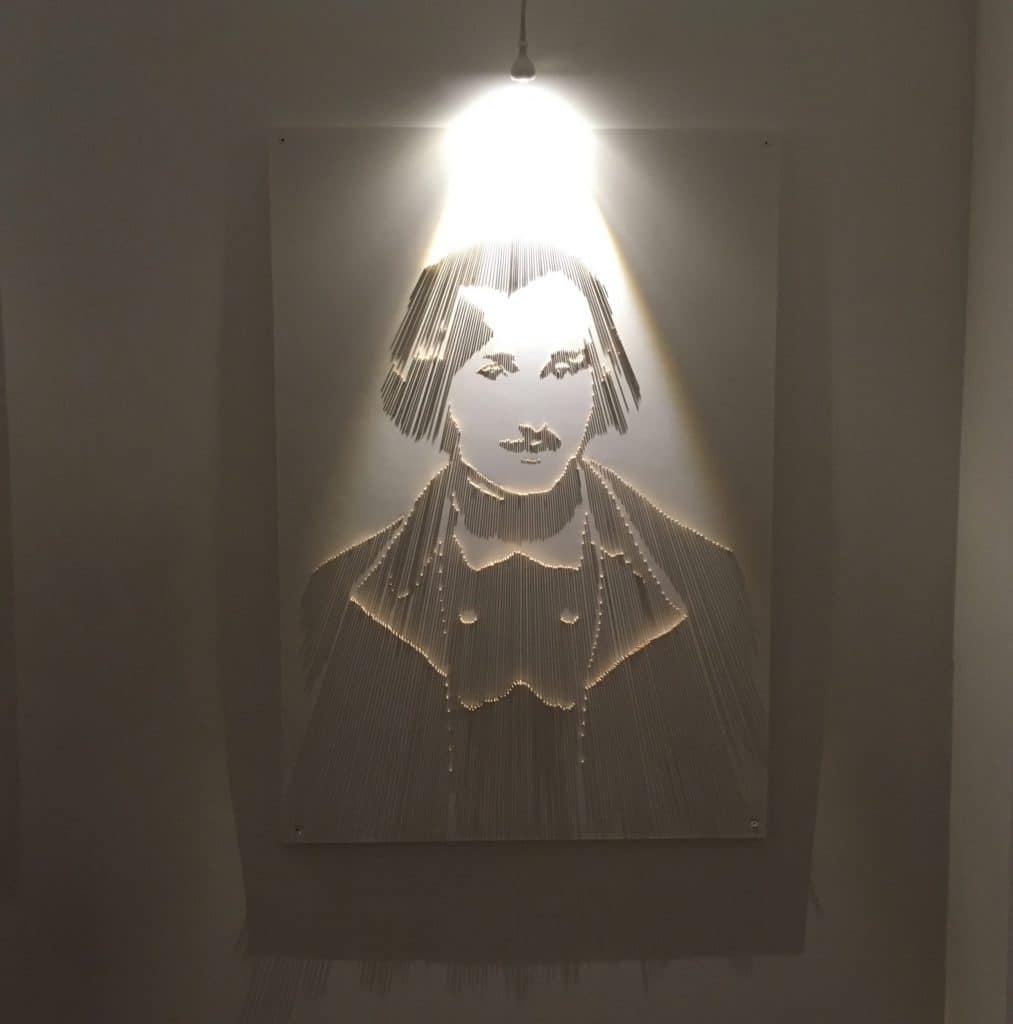
In the next room, a pile of ordinary objects is strewn seemingly randomly across a table. Soon you find, however, that their placement is not random at all. The objects themselves are carefully picked as they show St Petersburg’s development. There are two books on display; one written by Pushkin and the other by Gogol. There is also a metronome, which is used by the symphony and in opera performances. There is also an old fashion buoy and fishing net to highlight St Petersburg’s importance as a port near Europe. Also on display is a cup from McDonalds and a burger to-go box to symbolize the marketization of Russia after the collapse of the Soviet Union. Another important object marking more recent history is a flag for Zenit, St Petersburg’s football club. This signals the importance of Russia hosting the World Cup in 2018. The shadow all these objects cast shows the city’s skyline.
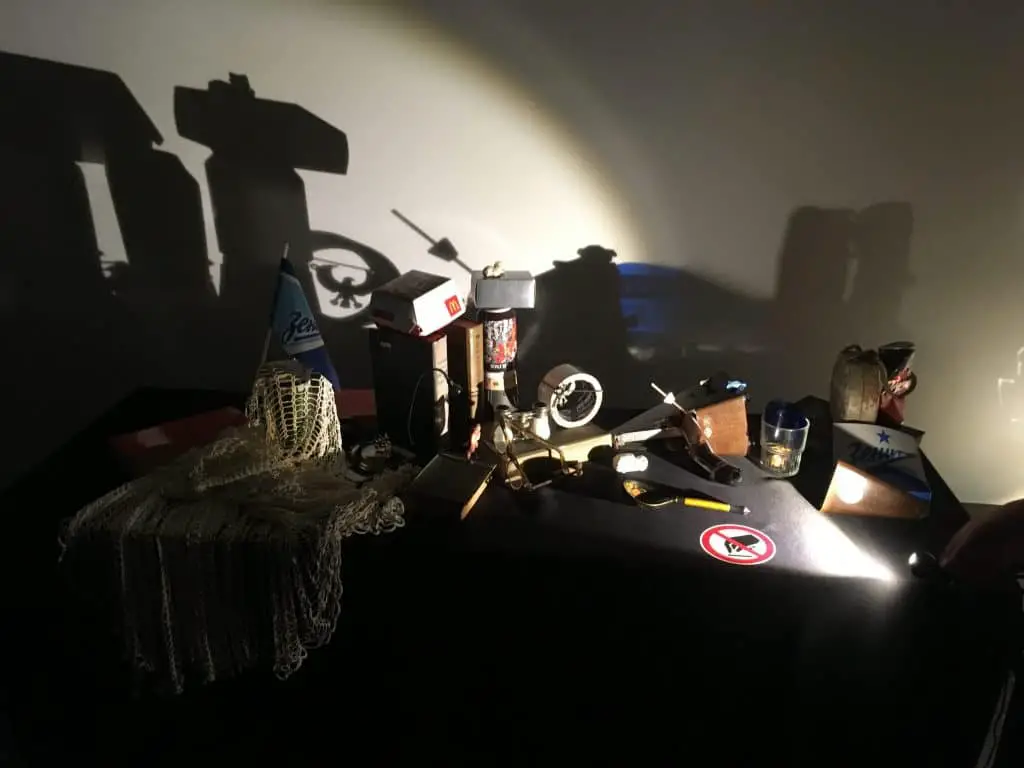
In the same room there is a display of children’s building blocks glued seemingly chaotically to the wall. The guide asks us to guess what the shadow will show. Upon looking at the blocks my friend guesses and is told by the guide that she is the first person to ever guess what the shadow will be correctly. The guide turns on the light, which reveals a man holding an umbrella with a trail of different shapes behind him. The umbrella is a symbol significant to a city that experiences a lot of precipitation year round. The guide asks us to interpret the piece of art. At first we are both unsure, but after a few minutes we are both able to answer. The random shapes behind the man demonstrate the unique histories each of us carry with us every day. Although they remain behind us, they always follow us as reminders of the past.
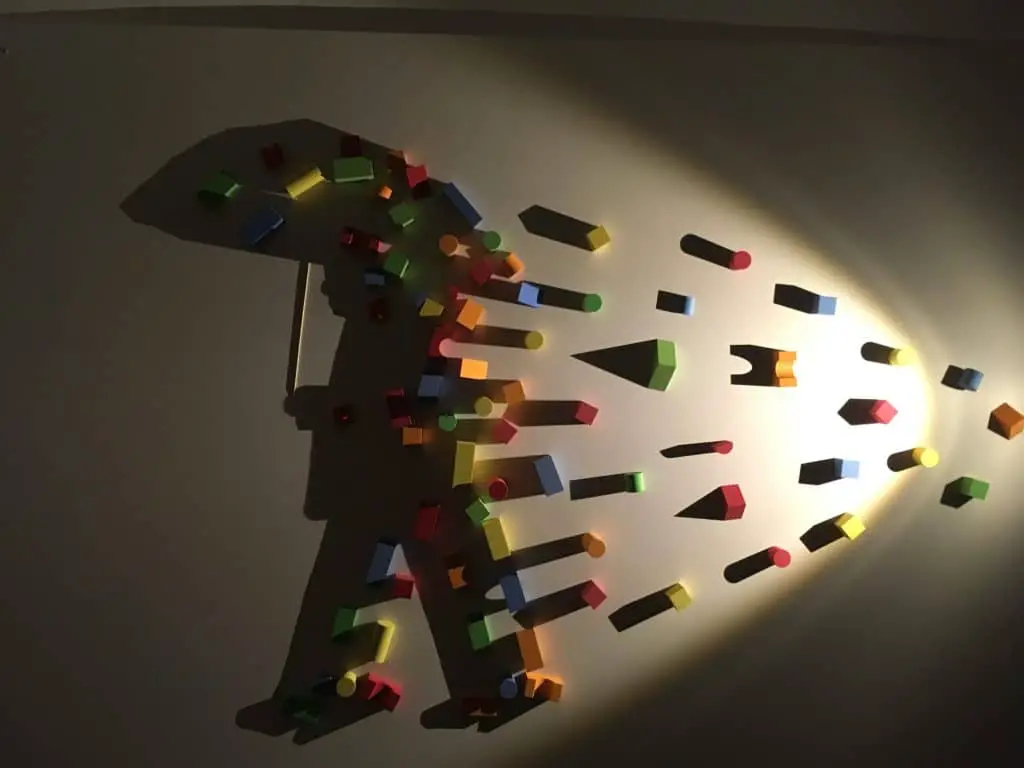
In the same room, there are four constructions that are meant to appeal more to a Western audience and thus deviate from St Petersburg’s history. Each of them are made with similar materials consisting of wire, foil, and rolls of film. Their shadows reveal Walter White from Breaking Bad, Salvador Deli, Marilyn Monroe, and Darth Vader. Although this breaks from the narrative thus far established by the museum, it is still a fun use of shadow as art, surprising the senses by smoothly creating order from chaos. It is also a welcome addition as it was fun to guess who each of the people/characters were that are significant to world culture.
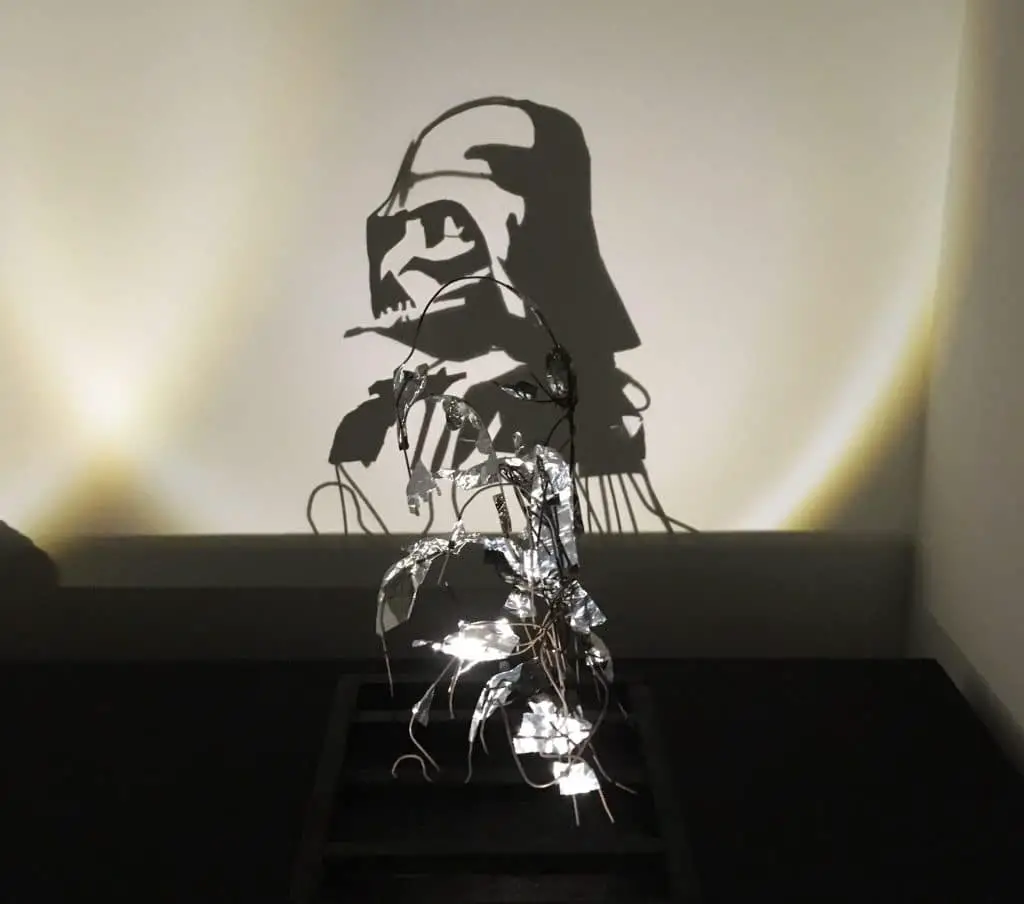
The final room begins with constructions made out of broken bottles that are also meant to be more purely art rather than history. The first construction lights up colourfully as a mountain scene. The second also is a colourful scene that prominently features a tree in the middle, that according to our guide is sometimes interpreted by viewers as a single piece of broccoli. Here, there is no wrong interpretation.
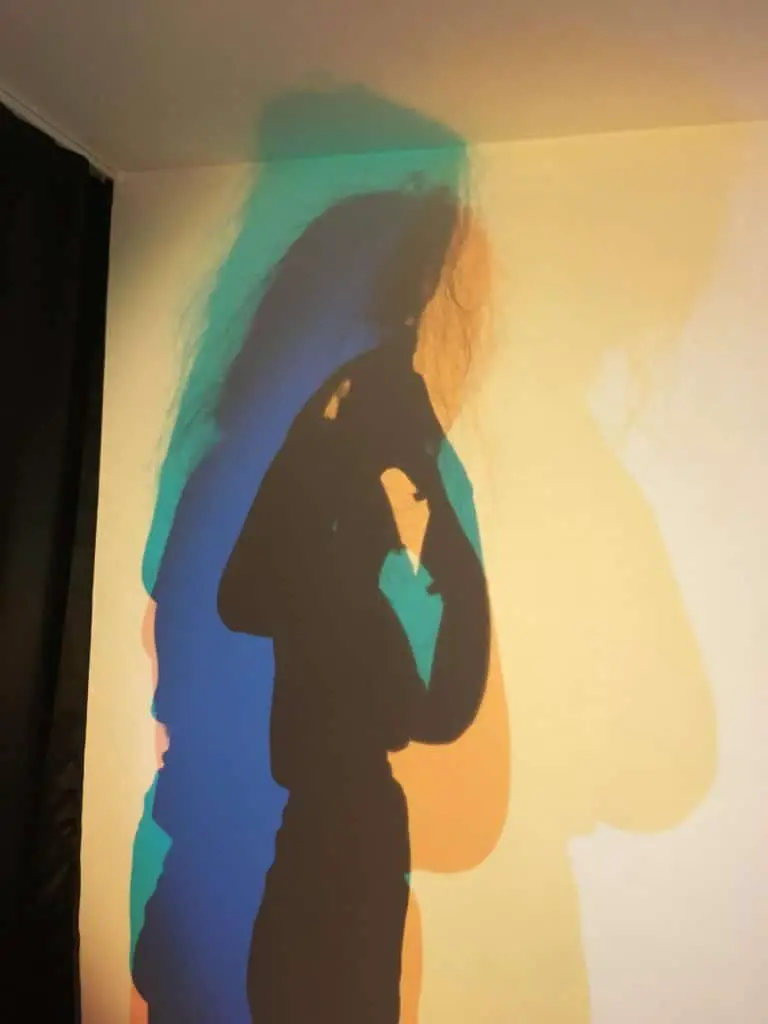
The last room is also interactive, the guide ushers us behind a curtain into a completely dark room and asks us to pose. Once we pose, she shines a light and asks us to turn around to see our pose captured on the wall’s special surface. We then could use our phones’ flashlights to sign our names, which appear like glow in the dark ink. This room is a fun break from all the information we had received in the rest of the museum.
Next to this dark room is a wall that is lit up with three colours that makes your shadow appear as if it were 3D behind you. The guide asks you to pose and takes photos of you and then leaves you to your own devices. There are also wooden cut outs of various animals and instructions to make hand shadows available to play with in front of the wall.
Although The Shadow Museum is small, it is full of unique displays of art. The beauty of the art relies on its impermanence and its difficulty. When you first see the objects they appear randomly constructed but once the light shines on them they become something beautiful like a painting that only lasts as long as the light is shining at the exact position needed. In a city full of art and literary museums, it is also interesting to see a different interpretation of St Petersburg’s unique history through unusual art.
The Shadow Museum
Address: Bolshaya Konyushennaya st, 5
Price: Adult 350 RUB, Preferential 250 RUB, free for children under 3, 10% discount for groups more than 5 people
Hours: daily from 11:00 to 22:00







